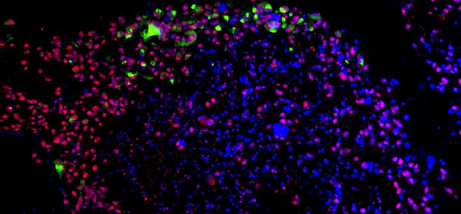Featured Products
Our Promise to You
Guaranteed product quality, expert customer support

Astrocytoma/Glioblastoma Cells

Glioma is a type of tumor that occurs in the brain. Gliomas are classified according to the types of glial cells associated with the tumor, as well as the genetic features, which can help predict how the tumor will behave over time and the treatments most likely to work.
Types of glioma
- Astrocytomas, including astrocytoma, anaplastic astrocytoma and glioblastoma
- Ependymomas, including anaplastic ependymoma, myxopapillary ependymoma and subependymoma
- Oligodendrogliomas, including oligodendroglioma, anaplastic oligodendroglioma and anaplastic oligoastrocytoma
Glioblastoma, also known as Glioblastoma multiforme (GBM), is a rapidly growing glioma that develops from star-shaped glial cells (astrocytes and oligodendrocytes). GBM, commonly referred to as a grade IV astrocytoma, is the most invasive type of glial tumor that grows rapidly and usually spreads to nearby brain tissue.
GBMs can arise in the brain directly or evolve from lower-grade astrocytomas or oligodendrogliomas. In adults, GBM occurs most often in the cerebral hemispheres, especially in the frontal and temporal lobes of the brain. GBM is a devastating brain cancer that typically results in death in the first 15 months after diagnosis.
Treatment Challenges
GBMs are biologically aggressive tumors that exhibit unique treatment challenges due to the following characteristics:
- Localization in the brain
- Inherent resistance to conventional treatment
- Limited capacity of self-repair
- Migration into adjacent brain tissue
- Disrupted tumor blood supply which inhibits effective drug delivery
- Tumor capillary leakage, resulting in an accumulation of fluid around the tumor
- A limited response to therapy
- The resultant neurotoxicity for glioma treatment
Prevalence and Incidence
GBM has an incidence of 2/3 per 100,000 adults per year, and accounts for 52% of all primary brain tumors. Overall, GBM accounts for approximately 17% of all tumors in the brain (primary and metastatic).
Symptoms
Symptoms vary depending on the location of the brain cancer, but may include any of the following:
- Persistent headaches
- Double or blurred vision
- Vomiting
- Loss of appetite
- Changes in mood and personality
- Changes in ability to think and learn
- New onset of seizures
- Speech difficulty of gradual onset
Diagnosis
- Imaging tests: Diagnostic tools include computed tomography (CT or CAT) and magnetic resonance imaging (MRI). Intra-operative MRI may also be useful to guide tissue biopsies and tumor removal. Magnetic resonance spectroscopy (MRS) is used to examine the tumor's chemical profile, with positron emission tomography (PET) helpful in detecting tumor recurrence.
- Tissue biopsy: A biopsy can be done with a needle before surgery or during surgery. Suspicious tissue samples are analyzed to determine the cell types and their level of aggressiveness. Specialized tests of the tumor cells can also tell the types of mutations, providing clues to your prognosis and guiding your treatment options.
Treatment Options
The mainstay of treatment for GBMs is surgery, followed by radiation and chemotherapy.
- Surgery: The primary objective of surgery is to remove as much of the tumor as possible without injuring the surrounding normal brain tissue needed for normal neurological function. Surgery, by providing a debunking of the tumor, carries the ability to prolong the lives and to improve the quality of remaining life.
- Radiation: The goal of radiation therapy is to selectively kill the remaining tumor cells that have infiltrated the surrounding normal brain tissue. The use of radiation therapy provides most patients with better outcomes and longer survival rates compared to surgery alone or the best supportive care.
- Chemotherapy: Patients undergoing chemotherapy are administered with special drugs designed to kill tumor cells. Although the aim of chemotherapy is long-term control of tumor, it does so in only about 20 percents of patients.
Because surgery, radiation and chemotherapy are unlikely to result in a prolonged relief of GBMs, researchers are always investigating innovative treatments when the first line therapy has failed. These include gene therapy, highly focused radiation therapy, immunotherapy and chemotherapies in combination with vaccines. It is worth noting that while some of these investigational treatments show promise, the most effective therapies introduced over the past three decades have only improved median survival of GBM patients by an average of three months.
Creative Bioarray focuses on the research and development of glioblastoma disease. We have established a range of glioma cell lines as well as corresponding evaluation systems. If you have any needs, please feel free to contact us.
Description: Glioblastoma cells established from an astrocytoma tumor (grade IV) of a 62-year-old...
Description: Established from the surgical resection of a left parieto-occipital glioblastoma...
Description: Established from the tumor material of brain from a 55-year-old man with a mixed...

